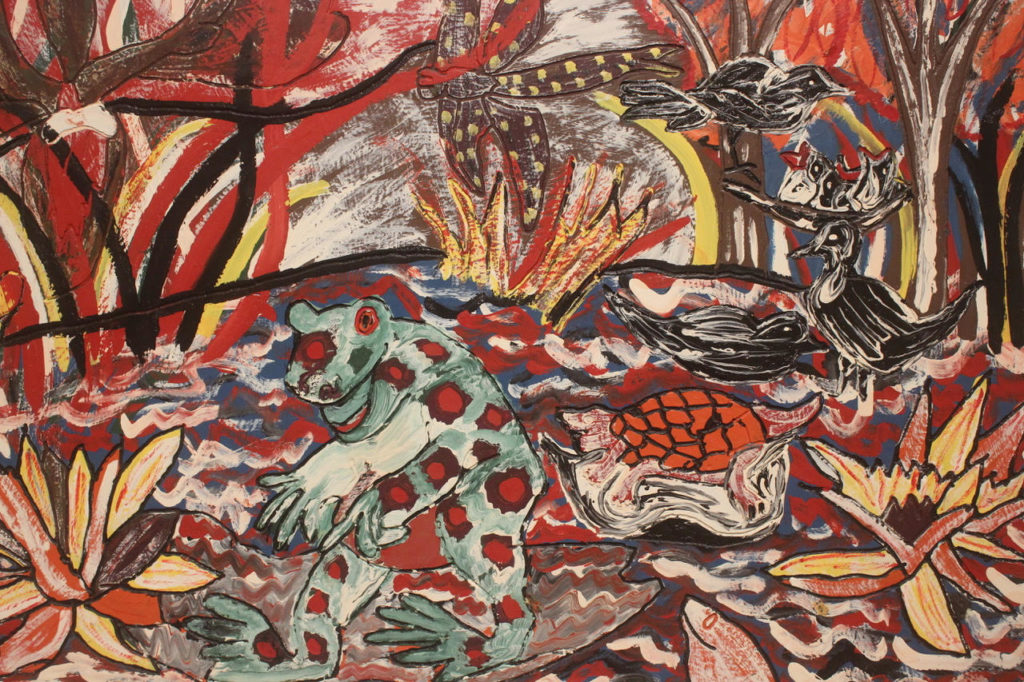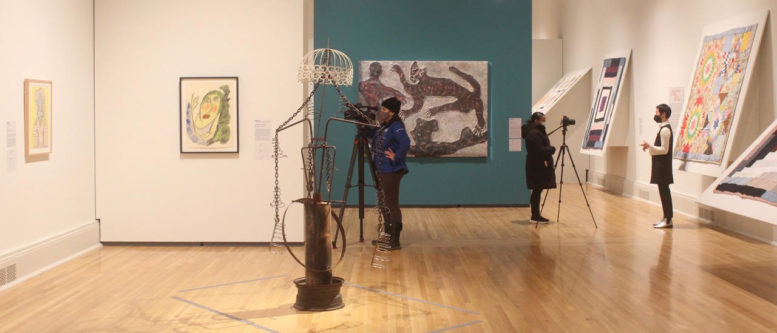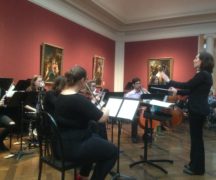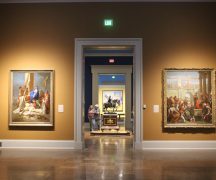By DAVID DUPONT
BG Independent News
Many of the artists with work in “Living Legacies: Art of the African American South,” an exhibit opening today at the Toledo Museum of Art, didn’t even think of themselves as artists.
Their work, said curator Jessica Hong, grew out of necessity and deep-rooted traditions.
Not until they became involved with the Souls Grown Deep Foundation, a non-profit organization “dedicated to documenting, preserving and promoting the artistic production and cultural traditions of Black artists in the rural south,” were they billed, and then accepted, the designation as artists.
The placement of their work in the collection of a 110-year-old institution dedicated to art is testament that their creations are indeed art and merit a place in the artistic canon, said Museum Director Adam Levine.
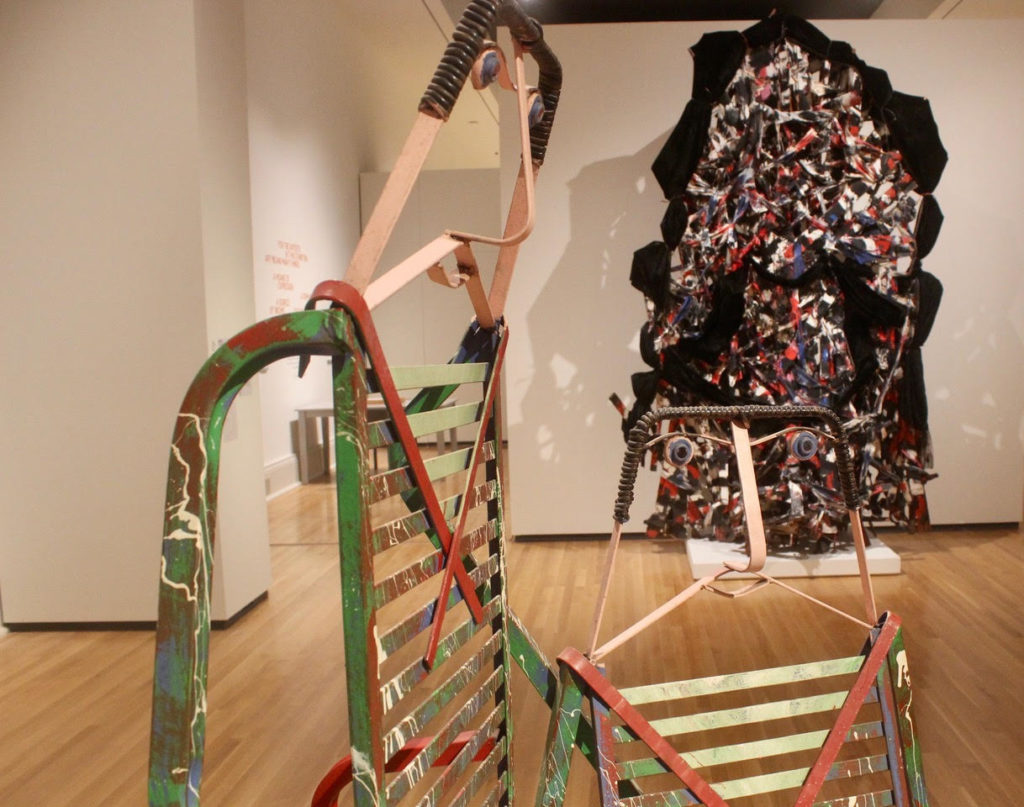
The 24 pieces included in the show were all purchased by the museum through Souls Grown Deep in the past two years. Very few, most notably the centerpiece of the show Thornton Dial’s “Trip to the Mountaintop,” have ever been on public display.
Inspired by Martin Luther King Jr.’s speech the night before he died, “Mountaintop,” like so much else in “Living Legacies,” is constructed of found materials. Dial fashions the image of “a treacherous, dangerous mountain,” Hong said. Coursing through the multicolored assemblage of screen, wire, fabric, steel and plastic, is a length of black funeral crepe.
Occupying the New Media Gallery, the exhibit takes the viewer on a path toward Dial’s monumental work.
Like any good journey, it begins with a map. This one pinpoints where the artists live, predominantly in Alabama. This land was once occupied by plantations that used forced labor. The artists are the descendants of those enslaved people.
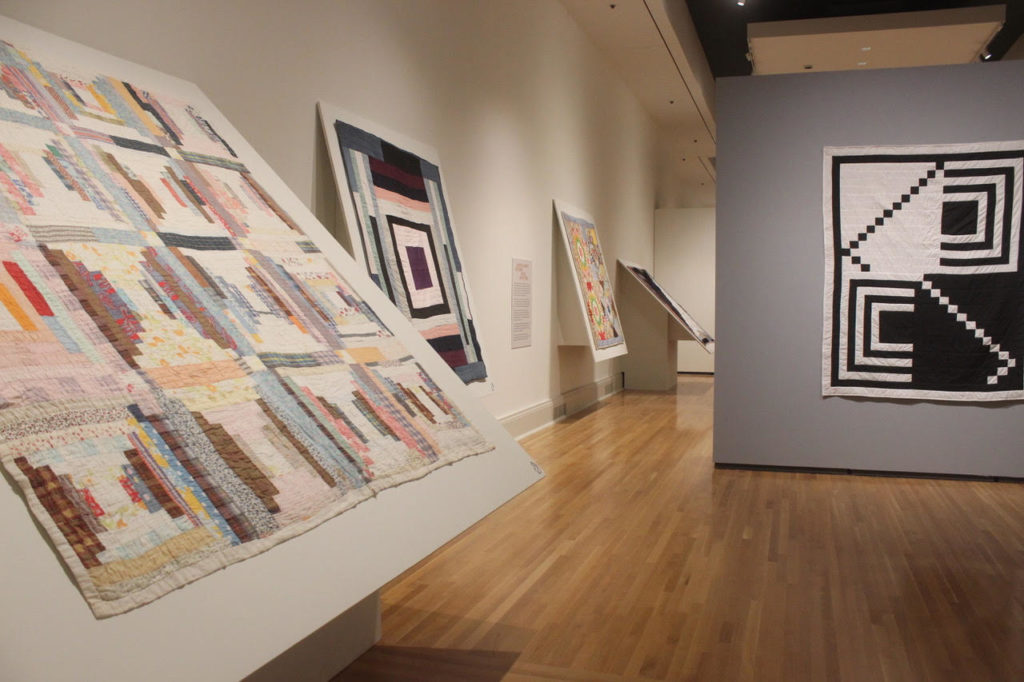
The first room includes two works, which touch on the themes that run through the exhibit, Hong said. One is “Home Sweet Home,” by Dial’s eldest son Thornton Dial, Jr. The enamel on wood image shows the artist as a happy frog frolicking in a kaleidoscopic swamp. It was done shortly after Dial quit his job building railroad cars for Pullman, where both his father and his brother Richard also worked and learned metalsmithing.
The industry of the area, centered on Bessemer, Alabama, informs much of the work. And the Dials are one of several families represented in the show – Richard Dial also has a sculpture included.
Facing “Home Sweet Home,” Leroy Almon’s woodcut “The New Heaven” speaks to the importance of “religion, spirituality and faith” in the African-American community that also runs through “Living Legacies.”
Fittingly the Souls Grown Deep Foundation takes its name from Langston Hughes’ poem “The Negro Speaks of Rivers.” The poem summons not just the Mississippi that runs through the so-called Black Belt where these works originate, but also the Nile, the Euphrates, and the Congo.

In Almon’s woodcut, inspired by the final two chapters of the Book of Revelations, a river spills from the mouth of God and courses through scenes of the Garden of Eden and the Last Days.
Hughes in his poem does not mention the Alabama River, but many of the quilts that are the heart of the exhibit come from the Gee’s Bend Quilting Collective. Gee’s Bend, now called Boykin, is in a bend in the Alabama River. Gee was the plantation owner, and many of the Black residents are descendants of those he enslaved. Still they prefer that moniker because it connects them to their ancestral roots more than the official name Boykin that honors a segregationist lawmaker with no ties to the area.
Pettway, the name of another plantation owner, is common, though all Pettways are not related by blood. Rita Mae Pettway is represented by a “housetop” quilt made from worn out work clothes. The dark blue and white pattern has a couple bursts of color, like wild flowers blooming through a crack in a side walk. Nearby is a contemporary black and white take on the “housetop” design created by Pettway’s daughter Louisiana Bendolph.
The recycling of material for art is a common thread in the show.
Joe Minter created what may be a whimsical self-portrait “How Do I Look?” from a tire rim, scrap metal, hooks and springs. The museum label quotes the artist as saying: “The whole idea handed down to me by God is to use that which has been discarded … A spirit of all the people that has touched and felt that material has stayed in the material.”
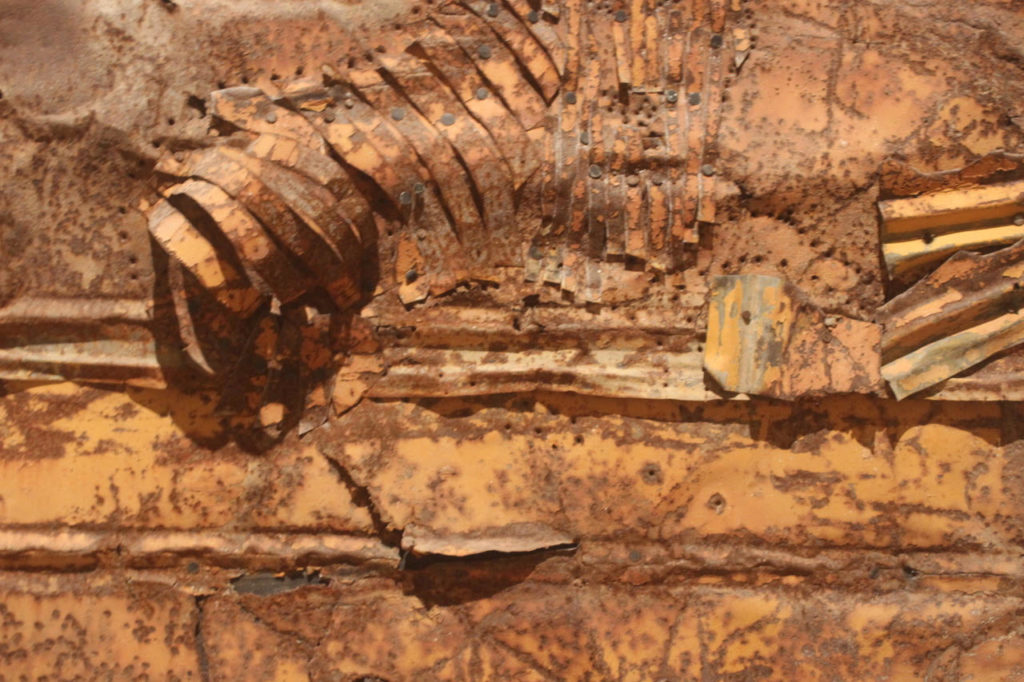
Ronald Lockett’s use of tin and nails in “Verge of Extinction” reflects the violence against nature and humanity brought by colonization that led to industrial development and its attendant environmental degradation. At the center of a ravaged land are the skeletal remains of a fish.
Hong noted that the elder Dial was a mentor to Lockett among others, and he was inspired by the Gee’s Bend quilters.
Placed in front of “Mountaintop” is “The Comfort of the First Born” by Dial’s younger son Richard, who development a business making quality wrought iron furniture, and this in turn inspired his sculpture.
“The Comfort of the First Born” depicts the elder Dial standing over his seated namesake. He seems to be bestowing his artistic legacy on his son legacy.
That legacy now has a home here in Northwest Ohio where it can inspire and enlighten viewers for years to come.
(The Toledo Museum of Art will be open for special hours Monday, Jan. 17, from 11 a.m. to 5 p.m. for Martin Luther King Day.)
